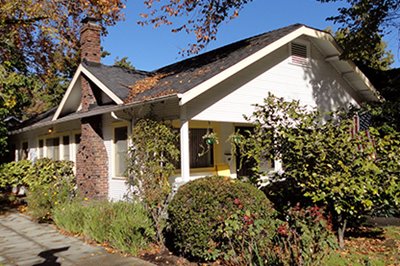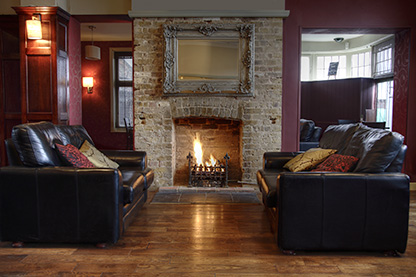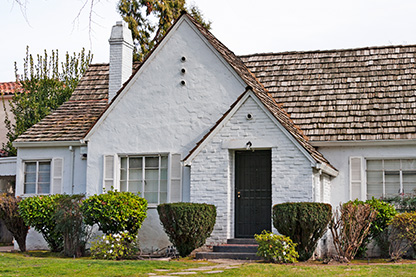Although reinforcing your house’s foundation is the biggest and most important step you will take to secure your property and making it stronger against earthquake damage, there are other potential hazards to be aware of that, with proper retrofitting or securing, can make your home safer for you and your family.
Learn more about the risks associated with chimneys and fireplaces, and how to protect your home and family against these hazards.
Unreinforced Masonry Chimneys
The 1932 Eureka earthquake killed one person when a chimney fell on them, and the Landers & Big Bear quakes of 1992 caused a chimney to fall on and kill a child. Due to the shaking from the magnitude 5.2 Yountville earthquake two decades ago, 2,000 houses required chimney repair.
Chimneys built before January 1, 1995 are more susceptible to collapse during an earthquake. A falling chimney can injure or kill people or pets below it, and cause additional damage to surrounding property.
Reinforcing, replacing or removing a chimney makes your home safer for people and pets.
How to fix a chimney hazard
Some chimneys can be deemed safe if certain criteria are met, including use of proper mortar, reinforcement with vertical bars and anchor straps, limited cracking observed, and if height requirements are met.
For the majority of unreinforced masonry chimneys, the safest retrofit is to demolish all or a portion of the chimney.
Contact a licensed contractor or structural engineer who can evaluate your chimney hazard and recommend the best course of action for your house.
And, learn more about chimney retrofits in FEMA P-1100, Chapter 7.
Fireplace Surrounds (Interior Masonry or Stone Veneer or Chimney Surround)
In the Yountville earthquake of 2000, despite the magnitude being only a 5.0, there was a critical injury of a young boy who was hurt by falling fireplace bricks inside his home.
Older, unreinforced masonry or stone veneer or chimney surround (fireplaces and hearths) can crack and fall during a quake, killing or injuring people nearby or causing property damage or hazard.
Removing or reinforcing this interior hazard can help make your living space safer and more secure.
How to strengthen a fireplace
Masonry surrounds and veneers constructed on or after January 1, 1995 do not require a retrofit.
If your house’s exterior was constructed prior to 1995, a licensed contractor or a registered design professional can do a simple assessment. If masonry surrounds that extend vertically less than 4 feet above the finished floor or horizontally less than 3 feet from the edge of the firebox, they likely do not require a retrofit. However, elements and members to which these elements are directly attached additionally need to be assessed to identify incomplete or inadequate installation, damage, and deterioration that might significantly affect seismic performance.
If the surrounds extend vertically or horizontally by a length that suggests possible seismic risk, or any elements of the surround cause concern, then the surrounds (masonry and veneers) can be removed and replaced. The reconstruction, as anchored masonry veneer, must be completed according to current masonry anchorage codes.
Contact a licensed contractor or a registered design professional to conduct an assessment.
You can also learn more about masonry or stone veneer or chimney surround requirements and retrofits in FEMA P-1100, Chapter 7.
Is retrofitting chimney and fireplace house hazards worth it?
A complete removal of fireplaces and chimneys can cost a few thousand dollars, depending on what work is performed. For example, you may choose to replace a hearth with a new one, and the decorative materials you choose will affect the cost. Or, you may need to close up the area, which requires installing drywall.
No matter what option you choose, a cost benefit analysis always involves deciding what is most important to you. Fixing dangerous hazards will cost some money up front, but by securing your house, you are investing in the long-term safety of your home and your family for generations to come.
Take action
Now that you’ve learned about additional house hazards, take the next steps in safety by learning more about personal preparedness and how to further secure items in your home, such as bookshelves and cabinets.
And, take necessary next steps, including how to find the best contractor for you, so that you can have a safer and more secure home before the next earthquake strikes.




